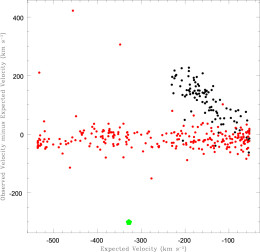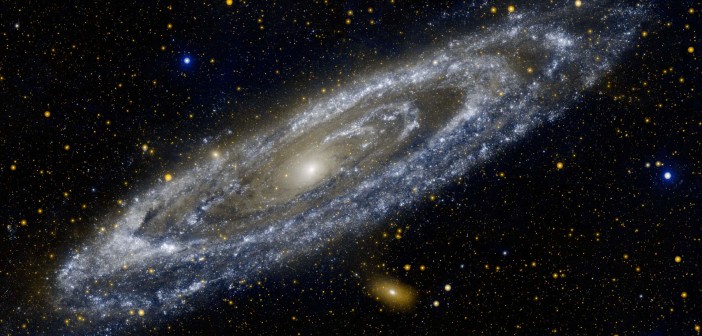Usually stars that are born together tend to move together — but sometimes stars can go rogue and “run away” from their original birthplace. A pair of astronomers have now discovered the first runaway red supergiant (RSG) ever identified in another galaxy. With a radial velocity discrepancy of 300 km/s, it’s also the fastest runaway massive star known.
Discrepant Speeds
When massive stars form in giant molecular clouds, they create what are known as OB associations: groups of hot, massive, short-lived stars that have similar velocities because they’re moving through space together. But sometimes stars that appear to be part of an OB association don’t have the same velocity as the rest of the group. These stars are called “runaways.”
What causes an OB star to run away is still debated, but we know that a fairly significant fraction of OB stars are runaways. In spite of this, surprisingly few runaways have been found that are evolved massive stars — i.e., the post-main-sequence state of OB stars. This is presumably because these evolved stars have had more time to move away from their birthplace, and it’s more difficult to identify a runaway without the context of its original group.
An Evolved Runaway

Difference between observed velocity and expected velocity, plotted as a function of expected velocity. The black points are foreground stars. The red points are expected RSGs, clustered around a velocity difference of zero. The green pentagon is the runaway RSG J004330.06+405258.4. [Evans & Massey 2015]
Evans and Massey discovered this rogue star via a photometric survey of RSGs in M31, followed up by spectroscopy with the Multiple Mirror Telescope. They determined that the star is also separated from other massive stars in the disk of the galaxy by about 4.6 kpc — which is roughly the distance it would be expected to travel, given its discrepant motion, in an assumed age of about 10 Myr.
The authors suggest that this star may be a high-mass analog of “hypervelocity stars” — stars within the Milky Way that are moving fast enough to escape the galaxy. The authors demonstrate that the total discrepant speed of RSG J004330.06+405258.4 is probably comparable to the escape velocity of M31’s disk.
But whether or not this star is moving fast enough to escape turns out to be moot: it will only live another million years, which means it won’t have enough time to leave the galaxy before ending its life in a spectacular supernova.
Citation
Kate Anne Evans and Philip Massey 2015 AJ 150 149. doi:10.1088/0004-6256/150/5/149

